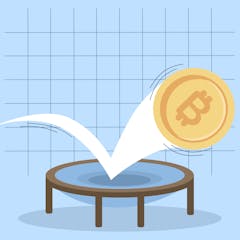
Articles on Interest rates
Displaying 1 - 20 of 405 articles

Next month’s budget is an opportunity for the government to move beyond its ‘I feel your pain’ rhetoric to a HomeKeeper-style policy for this particular group of temporarily squeezed Australians.

Raising interest rates can’t stop Japan’s currency from sinking to a record low.

A gap has opened up between inflation in the US compared to other regions like Europe and China.

How exactly does our central bank control the cost of borrowing in the first place?

Turkey’s central bank has raised interest rates in a much-needed reversal from years of unorthodox economic policy.

Simple tips to improve your chances of having your mortgage application accepted.

Despite different theories, there is no simple answer to whether prospective home buyers are better off buying before or after the expected interest rate drop in the next year.

The real question in the minds of many economists is what the trend in inflation will be going forward, and when interest rates will begin to fall and bring relief to Canadians.

The central bank is ‘really in risk management mode,’ its chairman said.

Twelve months ago, bitcoin looked dead in the water. Now it could be heading to all-time highs.

And will the vibecession ever end?

A lot of Australians are hoping there might be an interest rate cut at the next Reserve Bank board meeting but they shouldn’t hold their breath.

Market expectations for rate cuts sooner rather than later have been dashed but some economies remain in danger of recession.

Australia’s household saving ratio has collapsed from a high of 20% at the start of the decade to just 1.1%.

The UK, eurozone and US inflation stories have diverged, which means each economy is now fighting a distinct battle with prices rises, which could require very different weapons.

Fed Chair Jerome Powell bristles at talk of managing climate change, but the damage it is doing the US economy is hard to ignore, as the latest National Climate Assessment shows.

It’ll now be a frugal Christmas in many Australian homes. But there is a glimmer of good news: if we do tighten our belts, rates could start to come down by as early as the middle of next year.

In this podcast, independent economist Chris Richardson joins The Conversation to discuss a rate rise, "sticky" inflation, the fall in the standard of living, and a bleak prospect as we go into 2024.

So you thought raising interest rates brought down inflation? The reality is a bit more debatable.

We need to start cutting rates, but there’s something that has to happen first.
